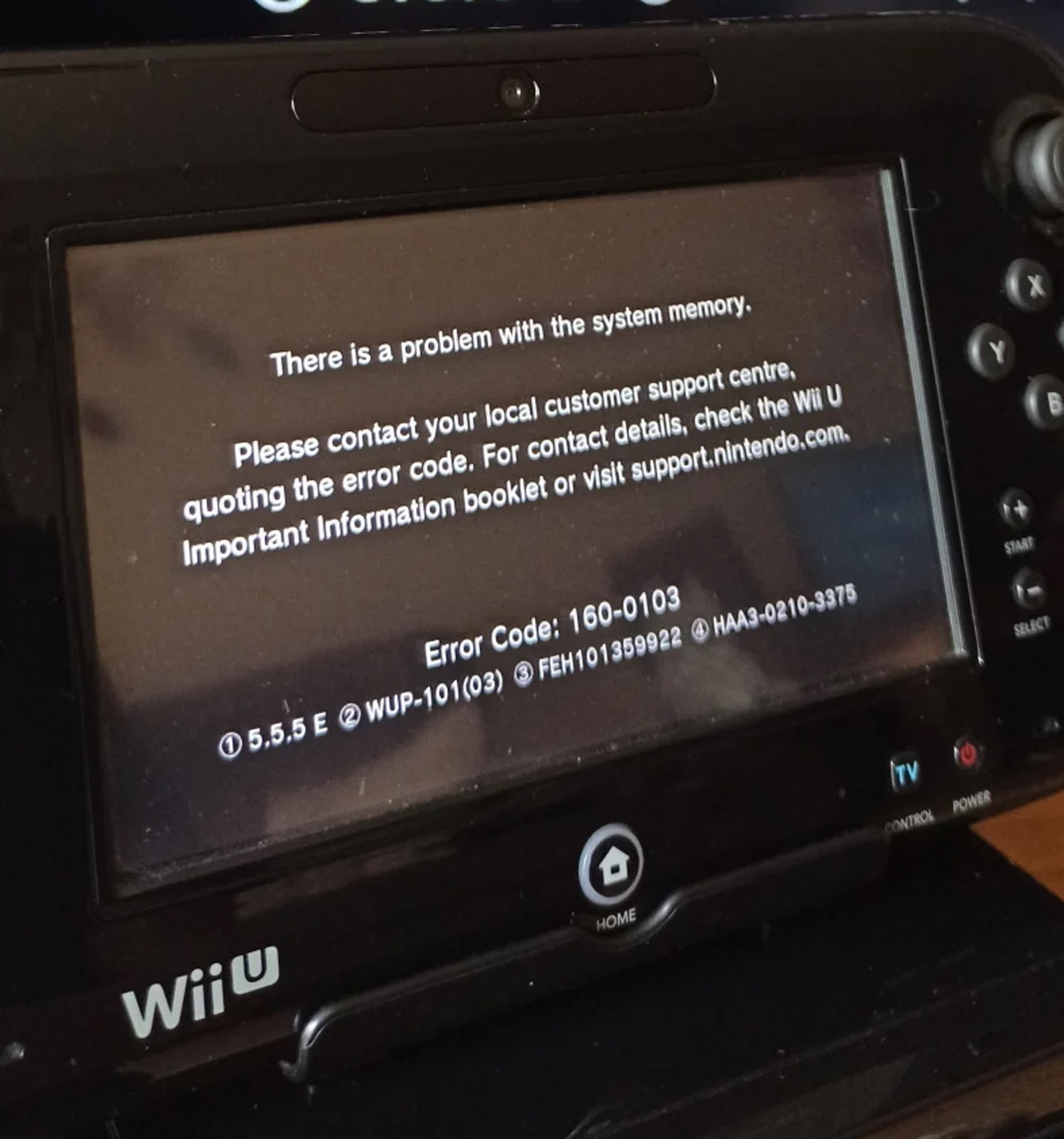Serving tech enthusiasts for over 25 years.
TechSpot means tech analysis and advice you can trust.
Facepalm: When Nintendo released the Wii U in 2012, gamers weren't exactly lining up to purchase the new console. Now, after 12 years, the device is exhibiting signs of hardware unreliability that could potentially cause many systems to effectively become unusable.
According to retro-focused podcaster "Retro Blast," Wii U consoles are "literally dying" due to unreliable memory chips used as system memory. If the device is left without power for too long, the inexpensive eMMC Flash memory soldered onto the motherboard can become corrupted, preventing the console from booting normally.
Wii U consoles are essentially self-bricking, displaying a generic system memory error during startup. Retro Blast noted that Nintendo partnered with memory manufacturers such as Toshiba, Samsung, and Hynix to produce the console's eMMC chips. Among these, Hynix's flash memory units are reportedly the most failure-prone, although the bricking issue appears to be a "lottery" at this point.
Retro Blast is not the first Wii U owner to encounter the issue. Many Nintendo fans have reported similar problems over the past few months, highlighting that the low-quality manufacturing choices made by the Japanese company are now negatively impacting retro gaming enthusiasts and hardware preservationists.

Once affected, a Wii U console can no longer boot using normal methods. The Wii U was hacked a few years after its release, allowing resourceful users to choose from various methods to attempt to revive their consoles after the internal eMMC chip becomes corrupted.
The most complex solutions for addressing error 160-0103 involve using a Raspberry Pi Pico microcontroller connected to the Wii U's USB port, along with a NAND recovery kit that requires soldering. However, the cheapest and likely easiest way to revive a self-bricked Wii U is through the ISFShax exploit, which can redirect the console's system memory to a properly formatted and pre-configured external SD card during boot.
While Nintendo could theoretically offer an official repair service to replace the failing eMMC unit, it is highly unlikely that the Japanese company would accept such support requests. The basic Wii U model was discontinued in 2015, and Nintendo formally announced the end of production in January 2017. Although fans are still trying to keep the troubled Wii successor alive after the cessation of official support, the ticking time bomb of the eMMC failure could leave many console collectors very unhappy.